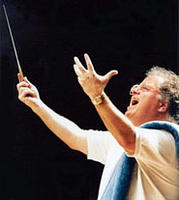Torke Tantrum

Since when did contemporary composers of art music acquire the impudence of popular rock stars? Headlining the annual festival Music 0X, award-winning Michael Torke was scheduled to participate in this collaborative celebration of new music, showcasing works of students, teachers, and professionals. But professional hardly describes Torke’s unexpected retreat from the festival just hours before his own featured concert. Slated to perform and exhibit several of his compositions, Torke’s penchant for intolerance and fear of a tarnished reputation exceeded that usually afforded artists in the uncertain market of new music. Displeased with the progress of the rehearsals, the angered perfectionist hopped a plane in breach of contract.
In a 1992 concert in Montreal Guns n’ Roses headman, Axl Rose, made a similar dash amongst thousands of fans. Rose was reportedly frustrated with the performance. But despite the original band’s break-up and the replacement of metal by grunge and alternative rock in the early ‘90s, Rose had little to lose by his actions. The band had already secured their continual reputation and amassed millions of dollars in concert and album sales. Furthermore, a devious nature is the attitude par excellence of rock. When you’re raking in the dough, and still living in the heyday of popularity, you can leave the manners and professionalism to others.
Like other contemporary composers, however, Torke is very much concerned with reaching audiences. Where the avant-garde trends of the twentieth century distanced the artist from public appeal, the new millennium marks a definite return to acceptance and inclusion. Even though Torke’s style is regarded as tonal, engaging, and marked by an embrace of popular styles, few will hear his works outside the expected circles. At Music 0X, Torke’s audience was made up of colleagues, not consumers. The participants of the festival support the cause by attending each other’s concerts. They are the future program directors, faculty, and critics who could keep Torke’s music in the repertoire. As concert halls continue to dwindle in patronage and attendance, the creators must stick together to keep their art alive.


